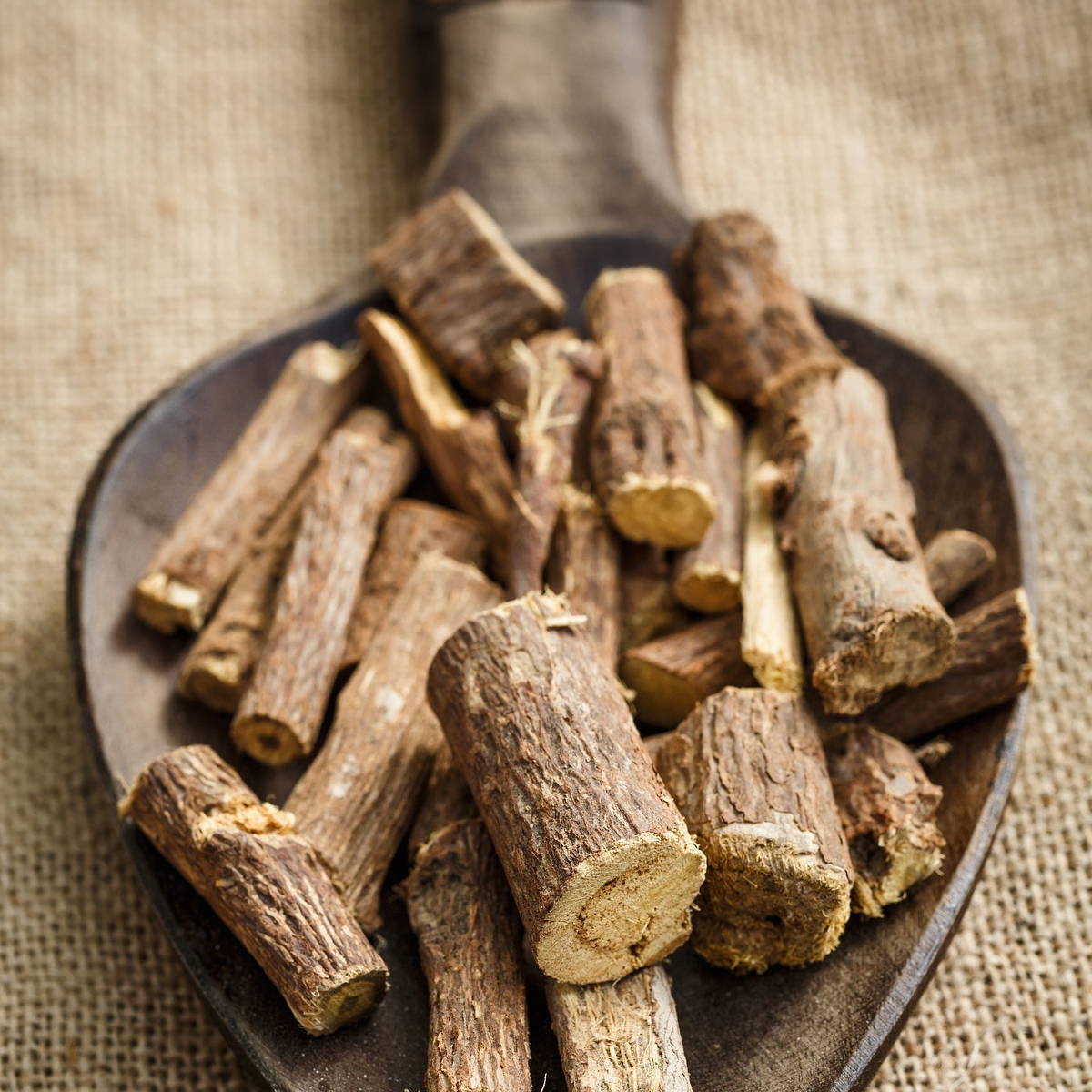Glycyrrhiza glabra
Licorice is a herb that people have used for thousands of years to treat a variety of ailments.
Although licorice does have medicinal effects, scientific research only supports some of its uses, and it may not be safe for everyone.
Due to its sweet flavor, licorice is also popular as a sweetener in candies, and manufacturers sometimes use it to mask the flavor of medications.
Some licorice candy does not contain any part of the licorice plant but uses anise oil as a flavoring instead because it tastes and smells similar to licorice.
Studies over the past 50 years have yielded information which has prompted new interest in the pharmacological and physiological effects of this plant.
The chemical structure of one of the principle agents in the root of the licorice plant is a glycoside of a triterpene called glycyrrhetinic acid.
Originally its structure and activity were thought to be similar to adrenal steroid hormones such as aldosterone and cortisol, since ingestion of licorice mimicked hyperaldosteronism and was suggested as a treatment for Addison’s disease.
The licorice with which we are familiar in the Western part of the world comes from the plant Glycyrrhiza glabra.
The plant is indigenous to Greece, Turkey, Spain, Iran, Caucasian and Transcaspian Russia, and northern China.
The sugar of licorice is safe for diabetics and claims that licorice in porter and stout supposedly both adds sweetness, thickness, and blackness to drinks and simultaneously prevents their fermenting.
Licorice contains more than 20 triterpenoids and nearly 300 flavonoids.
Among them, glycyrrhizin (GL), 18β-glycyrrhetinic acid (GA), liquiritigenin (LTG), licochalcone A (LCA), licochalcone E (LCE) and glabridin (GLD) are the main active components which possess antiviral and antimicrobial activities.Today, many people utilize licorice root to treat ailments like heartburn, acid reflux, hot flashes, coughs, and bacterial and viral infections. It’s regularly available as a capsule or liquid supplement.Additionally, licorice tea is said to soothe sore throats, while topical gels are claimed to treat skin conditions like acne or eczema.What’s more, licorice is used to flavor some foods and beverages.Licorice root is used both as a flavoring agent and medicinal treatment. It comes in many forms, including teas, capsules, liquids, and even topical gels.Licorice root contains over 300 compounds, some of which demonstrate potent anti-inflammatory, antibacterial, and antiviral effects.In particular, animal and test-tube studies link glycyrrhizin to anti-inflammatory and antimicrobial benefits.As a result, licorice root extract is used to treat a variety of skin conditions, including acne and eczema…

